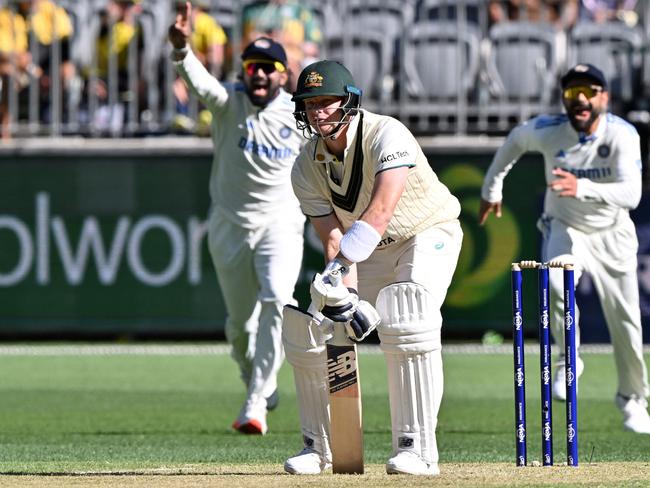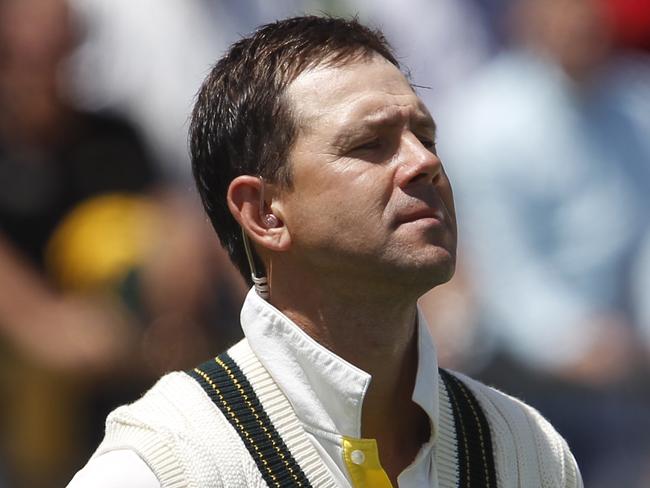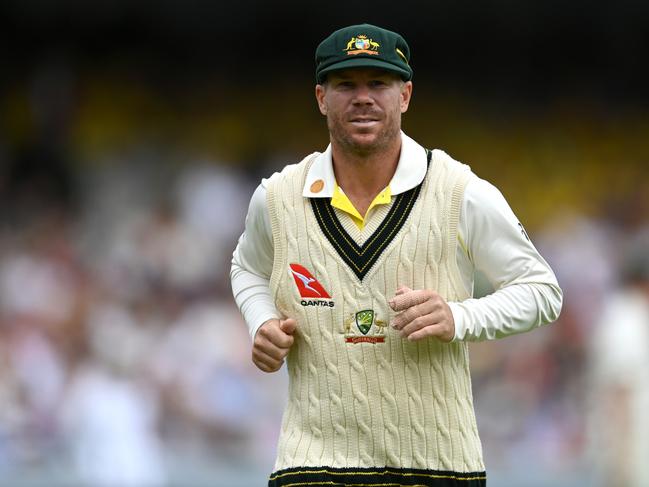Time to say goodbye to Australian cricket’s ‘Long Goodbye Syndrome’
As Steve Smith’s super-human batting powers suffer a slow and torturous decline, Ashley Gray asks whether it’s time the Australian public was spared long farewells once and for all, and selectors started blooding new talent earlier.

NSW
Don't miss out on the headlines from NSW. Followed categories will be added to My News.
Border, Hayden, Ponting, Warner … and now Smith. Legends to a willow-wielding man. Guys who shed blood and sledges for their country, whose Herculean feats kept Australia at the top of world cricket for yonks … but who also suffered, to varying degrees, from Long Goodbye Syndrome (LGS).
In days of yore, when a batsman’s eyes went, and the possibility of copping a Curtly Ambrose heat rock in the solar plexus became a little too real, batsmen were happy to retire with their body parts – and dignity - intact.
Like all performers, they knew the power of a well-timed exit.
They could go out at their peak like the Beatles or carry on forever like the Rolling Stones, each “new” performance tarnishing their legacy, reminding spectators of the gulf between glorious then and pantomime geriatric now.
But ridiculous sums of money and selectors’ eternal lack of faith in the next generation of batsmen have made retirement a far off and dirty word and ushered in the era of the long goodbye - and the sad spectacle of Steve Smith limping along at 6.33 runs per innings in the current Australia v India series.

If you could bottle the baggy green and sell it as cologne, it would have a salty Allan Border musk. No-one sweated harder for Australia than AB throughout the barren 1980s and early 90s, as the scrappy lefthander almost singlehandedly rebuilt the nation’s Test team in his own grumpy image.
But father time waits for no-one – not even Allan Robert Border AO – and his understandable desire to savour the fruits of his labours with a last-ditch victory over South Africa resulted in an elongated and messy retirement call that ultimately ended with the ACB forcing his hand and Border claiming he was “fed up with the innuendo and speculation”.
In his last two years at the helm, he played 21 Tests and notched up 1195 runs at 41.20, almost 10 runs lower than his overall career average.
While Border’s departure didn’t set the template for long goodbyes, his protracted exit reminded the public that every player has his use by date.
Steve Waugh recognised this immutable law of the player-fan relationship when he controversially – and some said, selfishly - announced at 38 that the 2003-4 season would be his last, as Australia’s morbid fear of having a quadragenarian captain hit fever pitch.
The real beginning of Long Goodbye Syndrome coincided with the establishment of the IPL and suitcases of life-changing money being thrown at cricketers – both good and mediocre.
Cricket Australia contracts were fattened accordingly and the R word became the great unmentionable.

After Shane Warne, Justin Langer and Glenn McGrath heroically exited Test cricket in a shower of beer and praise, it was left to the likes of veteran opener Matthew Hayden to keep a fading team in champion shape.
But as his infamous “circle of trust” - a dressing room diagram he drew on butcher’s paper to show up team members he had little faith in - became smaller and smaller and his deficiencies against the moving ball became bigger and bigger, it was apparent that not even “Big Dos” could save us.
But he kept on going even when the scoreboard screamed “game over”.
His last 11 Tests yielded 622 runs at a rather “Small Dos” average of 32.73.
Ricky Ponting found himself in a similar set of circumstances to Hayden, only he had the extra burden of the captaincy weighing him and his trusty Kookaburra Kahuna down.
He was possessed of a “keep pushing for a bit longer and see if I can play well on my 500th Ashes tour” mentality and an honourable but misplaced sense that Australian cricket couldn’t do without him.

But the stats were damning: 2681 runs at 37.76 in his last four years in the baggy green - a far cry from his heyday.
David Warner is perhaps the most notorious Long Goodbye Syndrome sufferer. Aided by a glut of openers who could neither bat nor chirp as well as the man once known as “Bull”, his pyrotechnics in the Test arena declined markedly over three torturous years but such was his mouthy chutzpah and the selectors’ timidity, he kept his no.1 spot despite a yeoman’s average of just 30.12 in his final 23 Tests.
In future years, the terms “Smithsonian” or “Smith-like” may well refer to the greatest Aussie slugger since DG Bradman, but with every fidgety Steve Smith failure, there’s an increasing possibility it will be associated with Long Goodbye Syndrome.
In recent times, the man who shadow bats in his sleep has had to raid his not insignificant brownie point stash to keep his Test career liquid as those Bradman comparisons gently fade into the SCG sunset.

He now has 1161 runs at a very un-Smudge-like 36.28 in 20 Tests from his last three years of Test cricket. That’s a whopping 20 runs fewer than his overall career average.
It’s not just Australian cricket that suffers from LGS. Since 2020, charismatic Indian superstar Virat Kohli has cobbled together just 1961 Test runs at 32.14, although his declining on-field numbers have been offset by a booming social media following of 336.5 million, which apparently counts for a lot these days.
Curiously, though, this affliction doesn’t seem to affect bowlers, whose ageing bodies – and the wrath of selectors - combine to ensure they don’t – and can’t - outlive their usefulness.

Of course, the real collateral damage of LGS is a generation of young-gun batsmen held back while they and the Australian cricket public wait out yet another long-winded farewell and the national team becomes stacked with Methuselahs.
The counter argument is that our long in the tooth saviours help transition the side from one era to the next.
But at what cost?
Do we really want to be a cricket-playing nation where the 1970s disco song “Never can say Goodbye” defines our attitude to past-it heroes, and laps of honour go on forever?




